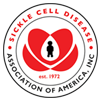Trusted Resources: Evidence & Education
Scientific literature and patient education texts
Vaso-Occlusive Crises and Costs of Sickle Cell Disease in Patients With Commercial, Medicaid and Medicare Insurance – The Perspective of Private and Public Payers
source: Journal of Medical Economics
year: 2020
authors: Nirmish R. Shah, Menaka Bhor, Dominick Latremouille-Viau, Vikash Kumar Sharma, Gary A. Puckrein, Patrick Gagnon-Sanschagrin, Ankur Khare, Mukesh Kumar Singh, Elizabeth Serra, Mikhaïl Davidson, Liou Xu, Annie Guerin
summary/abstract:Aim:
To characterize vaso-occlusive crises (VOCs) and describe healthcare costs among commercially-insured, Medicaid-insured, and Medicare-insured patients with sickle cell disease (SCD).
Materials and Methods:
The IBM Truven Health MarketScan Commercial (2000-2018), Medicaid Analytic eXtract (2008–2014), and Medicare Research Identifiable Files (2012–2016) databases were used to identify patients with >=2 SCD diagnoses. Study measures were evaluated during a 12-month follow-up period, stratified by annual number of VOCs (i.e., 0, 1, and >=2).
Results:
Among 16,092 commercially-insured patients (mean age =36.7 years), 35.3% had 1+ VOCs. Mean annual total all-cause healthcare costs were $15,747, $27,194, and $64,555 for patients with 0, 1, and 2+ VOCs, respectively. Total all-cause healthcare costs were mainly driven by inpatient (0 VOC =31.0%, 1 VOC =53.1%, 2+ VOCs =65.4%) and SCD-related costs (0 VOC =56.4%, 1 VOC =78.4%, 2+ VOCs =93.9%).
Among 18,287 Medicaid-insured patients (mean age =28.5 years, fee-for-service =50.2%), 63.9% had 1+ VOCs. Mean annual total all-cause healthcare costs were $16,750, $29,880, and $64,566 for patients with 0, 1, and 2+ VOCs, respectively. Inpatient costs (0 VOC =37.2%, 1 VOC =64.3%, 2+ VOCs =72.9%) and SCD-related costs (0 VOC =60.9%, 1 VOC =73.8%, 2+ VOCs =92.2%) accounted for a significant proportion of total all-cause healthcare costs.
Among 15,431 Medicare-insured patients (mean age =48.2 years), 55.1% had 1+ VOCs. Mean annual total all-cause healthcare costs were $21,877, $29,250, and $58,308 for patients with 0, 1, and >=2 VOCs, respectively. Total all-cause healthcare costs were mainly driven by inpatient (0 VOC =47.9%, 1 VOC =54.9%, 2+ VOCs =67.5%) and SCD-related costs (0 VOC =74.9%, 1 VOC =84.4%, 2+ VOCs =95.3%).
Conclusions:
A high proportion of patients experienced VOCs across payers. Furthermore, inpatient and SCD-related costs accounted for a significant proportion of total all-cause healthcare costs, which increased with VOC frequency.
DOI: 10.1080/13696998.2020.1813144
read more
Related Content
-
CTX001 Continues to Show Promise in Severe SCDA single dose of CTX001, an experimental...
-
A Five Fold Decrease in Admissions for Uncomplicated Vaso-Occlusive Crisis and Other Benefits from Care in Infusion ...Patients with sickle cell disease (SCD) ...
-
The effects of relaxation intervention on pain, stress, and autonomic responses among adults with sickle cell pain i...Pain is the major complication for the a...
-
Vaso occlusive Crisis Pain Assessment & Managementhttps://www.youtube.com/watch?time_conti...
-
APS Scientific Meeting 2019The American Pain Society will hold its ...
-
Safety and early hints of benefit seen in phase 1b trial of PF-04447943Sickle cell disease (SCD) patients were ...
-
Living With Sickle Cell Disease Is a Constant Battle With Pain, According to one Woman Who Has It“You don’t look sick.” That’s ...
To improve your experience on this site, we use cookies. This includes cookies essential for the basic functioning of our website, cookies for analytics purposes, and cookies enabling us to personalize site content. By clicking on 'Accept' or any content on this site, you agree that cookies can be placed. You may adjust your browser's cookie settings to suit your preferences. More Information
The cookie settings on this website are set to "allow cookies" to give you the best browsing experience possible. If you continue to use this website without changing your cookie settings or you click "Accept" below then you are consenting to this.




 +myBinder
+myBinder
